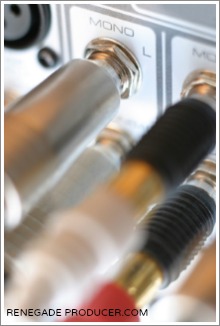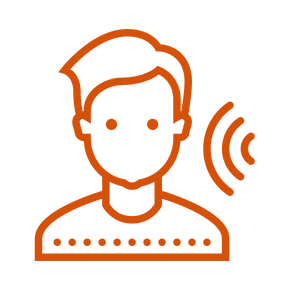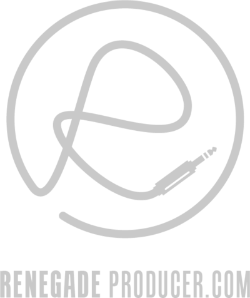25-step music production process checklist and video workshop >>>
Computer Sound Cards / Pro Audio Interfaces
Selection Guide for Music Producers:
Most computer sound cards...... that come with standard PC's aren't fit for music production. You need to look at computer sound cards or audio interfaces with a bit more, shall we say, oomph! Why not just use the sound card which comes with the PC? The sound card in your PC was not designed with musicians, sound engineers and music producers in mind. You may find the range of pro computer sound cards and audio interfaces available for your DIY home studio staggering, and the terminology somewhat overwhelming. Fret not... ... because this little guide will make your choices slightly easier. |
 |
Important Note:
You make one of your most important purchases when you decide to buy a pro sound card to make your own music with. There are many factors involved in choosing the right sound card for your home music studio, which means you'll need to do some serious research before you buy.
You can use this page as a place to start off, and not as a full-blown guide to computer sound cards and audio interfaces (which can be a topic for a whole new site), so you can't blame me when things go down wrong with your sound card choice. I just provide the most helpful information I can, and you do the research you require! Sharp? Sharp OK then!
With that said and done, let's get down to business...
What do computer sound cards or audio interfaces do?
Basically, your sound card takes signals from outside your computer and puts them inside, and vice-versa.
You obviously know there's more to it than that! So, here goes...
Your
sound card or audio interface takes analogue audio signals (microphone,
instrument or turntable outputs), and converts it to digital audio
signals computers like and understand. This allows you to record your
audio on your PC or Mac using recording software.
Computer sound
cards or audio interfaces can also take recorded digital audio signals
from your computer, convert it to analogue audio signals, and output
the converted signal to your monitors (pro audio speakers), mixing desk,
processors and other stomp-boxes and toys.
The above two
processes are referred to by men in white coats as Analogue-to-Digital
(A/D), or Digital-to-Analogue (D/A) conversion. The quality of your
conversion depends on the quality of the Digital Audio Converters (on
your sound card) and on your audio drivers (software which comes with
computer sound cards).
Digital Audio Converters...
You
need to know the terms "Sampling", "Sample Rate" and "Bit Depth" here
so we may as well get it over and done with (quick!)...
Definition: Sampling
Process in an A/D converter which measures and captures the amplitude of an analogue sound wave many times per second.
Definition: Bit Depth
Each
sample consists of many levels of audio energy which is measured and
expressed in bits (binary digits). The higher the bit depth number,
the more levels per sample, the higher the quality.
Definition: Sample Rate
Number
of times per second the audio waveform is sampled by the A/D
converter. The higher the sample rate, the higher the quality.
So dropping all the technical stuff, what bit depth and sample rate should you look for in computer sound cards?
My opinion (yeah, just an opinion)...
16-bit
/ 44.1 kHz is CD quality, though you'd be better off going for 24-bit /
44.1 kHz for your sound card or audio interface (even when it will go
back to 16-bit on CD).
With 24-bit / 192 kHz sound card you're
completely sussed and sorted for whatever music you want to create, as
long as your you have tons of hard disk storage space (because higher
audio resolution means more space needed for your audio files).
Got
it? Great! Now let's move on from the Digital Audio Converters to
another important part of your sound card or audio interface...
The Audio Drivers...
The software drivers are basically just some very important software codes which manage the flow of information between your computer CPU and your sound cards Digital Audio Converters.
The information needs to be sorted and managed in such a way so your software sequencer application (Cubase, Sonar, Logic etc.) gets the audio information at the right time, and quickly.
The company who produces your sound card or audio interface updates the drivers on a regular basis and makes the updates available on their web sites so you can download.
You want to make sure...
... the drivers of your sound card is compatible with your computers operating system (Windows, Mac OS etc.).
... the drivers will work with your chosen music production software program (Cubase, Logic, Sonar, Acid, Pro Tools etc.).
Pro quality D/A or A/D converters
with bad quality drivers mean bad sound quality. So research carefully
when it comes to your choice between the different computer sound cards.
Sound Card Formats...
You can buy sound cards or audio interfaces of different types...
- PCI / PCIe (You can use this option for desktops.)
- Firewire (You can use this option for desktops and laptops.)
- Cardbus (You can use this option for laptops.)
- USB
(Try to avoid as far as possible as it may cause "issues" with your audio production. Use USB2.0 if you absolutely must).Update: USB interfaces have come a long way since I first wrote this post and quite a few have become pretty decent. USB 3.0 interfaces are now also available. - Thunderbolt.
And finally...
Here
are some questions you want to ask before you buy your audio interface
or sound card to make your own music:
Which music creation software do I want to use with my sound card?
Your
sound card or audio interface and the recording software program you
use (Cubase, Logic, Sonar, FL Studio etc.) need to be compatible.
Check
the "System Requirements" on the music production software package you
want to use, then check the "Technical Specifications" for the software
driver type of the sound card you choose to make music with.
You'll find many various types of software drivers available...
ASIO, WDM, DirectX, MME, Core Audio, MAS, DAE, Pro Tools LE and Pro Tools M-Powered.
You
simply want to make sure the driver type required by your music
production program is the driver type of your sound card or audio
interface you purchase.
How many inputs/outputs do I need on my sound card to make my own music the way I intend to?
One
pair of stereo inputs/outputs may do you well when all you want to do
is record a single instrument at a time. You'll need more in/outs for
recording more instruments at once.
You want to also consider how
much you want to expand your home music studio in the (near) future.
More in/outs may not be vital to start off with, though more just seems
much better when buying a piece of gear as vital as your sound card.
What's my budget for a sound card or audio interface?
You
now know the sound card or audio interface you choose to make your own
music with can make or break your sound quality, so be prepared to pay
for what you get. Save money on other things, not your sound card or
audio interface. You want the best you can afford and nothing less.


Learn to understand equalisers and frequencies to supercharge your mixing skills and get results, fast...

New producer? Learn everything you need to produce your first professional track right now...

Would you like to discover the simplest and easiest way to learn music theory as a music producer?
Share this post. Spread the knowledge so other producers can benefit too:
- Renegade Producer
- Home Studio
- Music Production Sound Cards
ⓘ Some pages contain affiliate links so I might earn a commission when you buy through my links. Thanks for your support! Learn more


